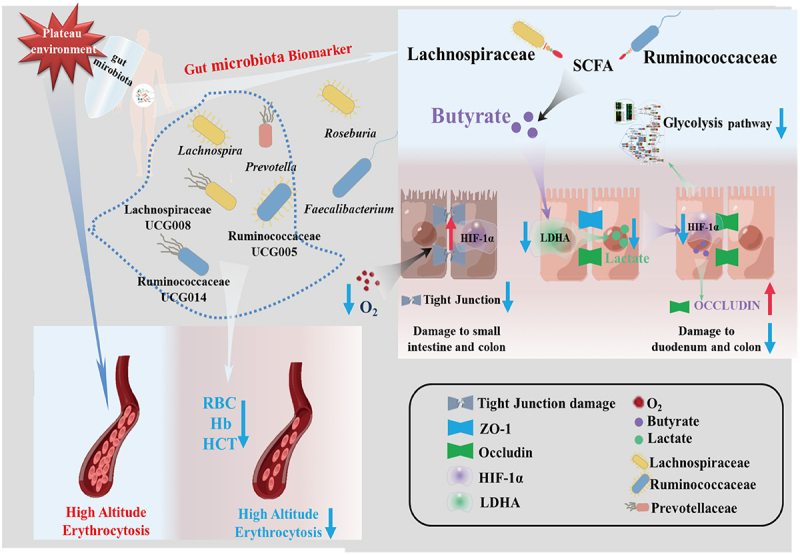Figure 9.

The potential mechanism of gut microbiota biomarkers to help maintain human health at the plateau.
The high-altitude hypoxic environment can be detrimental to the body. On the one hand, reduced oxygen levels lead to high-altitude polycythemia, but specific gut microbiota biomarkers can dull the erythrocyte production response, aiding adaptation to the high-altitude environment. On the other hand, the high-altitude hypoxic environment can lead to intestinal and intestinal barrier damage and gut microbiota imbalance. Gut microbiota biomarkers in people living in plateau regions protect against intestinal damage caused by the harsh environment. Butyrate produced by gut microbiota biomarkers may reduce lactic acid build up in the intestinal tract and decrease the overexpression of HIF-1α, which is caused by hypoxia at high altitudes, by inhibiting LDHA activity. Inhibiting the downstream target gene of HIF-1 can help the host better adapt to the plateau environment, maintain the stability of the intestinal barrier, and reduce intestinal damage. RBC: Erythrocyte count; Hb: Hemoglobin concentration; HCT: Hematocrit. The figure is drawn using Figdraw. (https://www.figdraw.com/).
